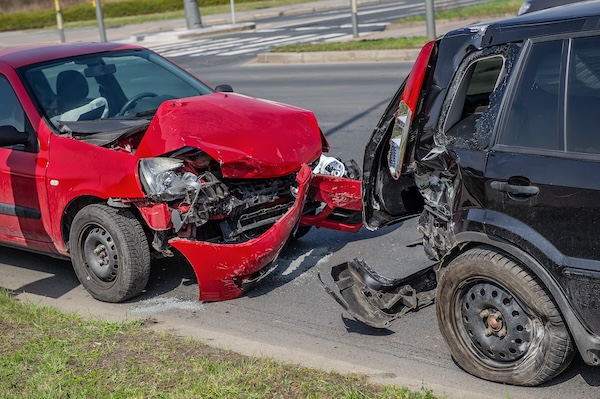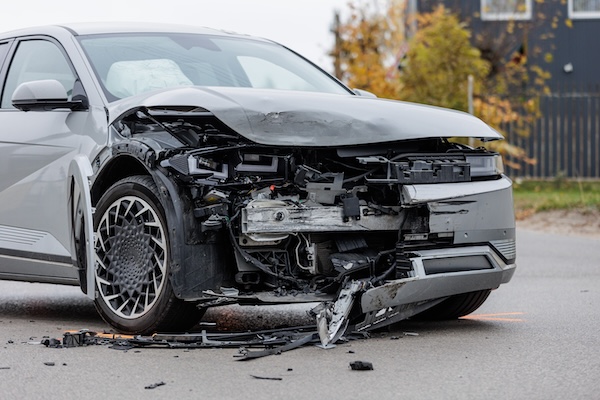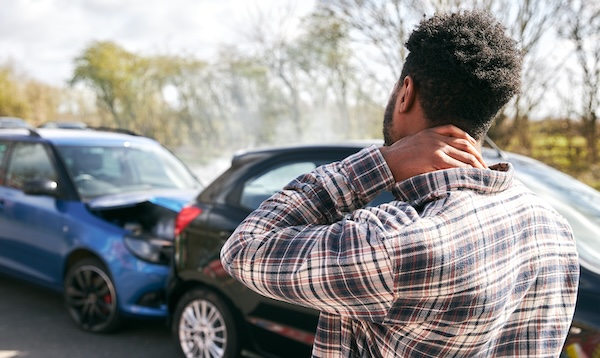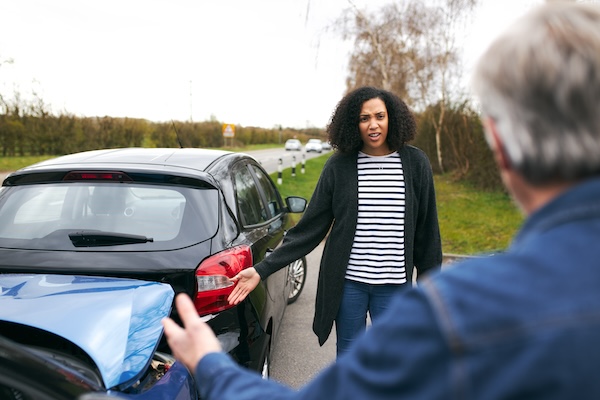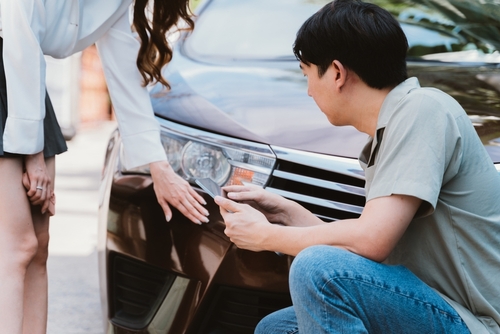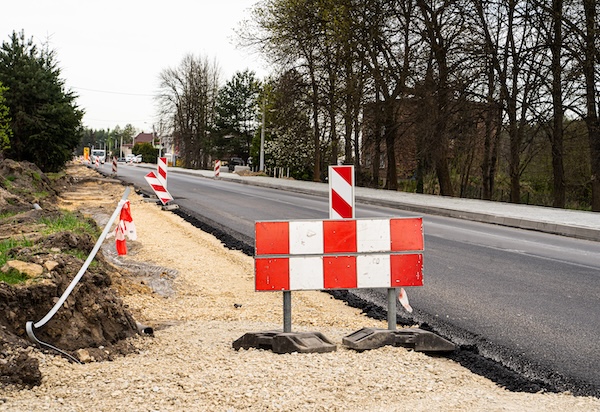Understanding Causes of Rear-End Accidents in College Park, GA
Rear-end accidents are among the most common types of car accidents on U.S. roads, and College Park, Georgia, is no exception. Whether you’re traveling on the busy streets of Main Street or navigating the congested highways near Hartsfield-Jackson Atlanta International Airport, rear-end accidents are a real concern for local drivers. According to the National Highway Traffic Safety Administration (NHTSA), most rear-end accidents occur due to distracted driving, aggressive driving behaviors, and failure to maintain a safe following distance.
Whether the collision occurred at a stoplight in downtown College Park, during traffic on Interstate 285, or in adverse weather conditions, knowing what to do next is essential. hit from behind in College Park, you may be entitled to legal help from a local law firm, such as Buddoo and Associates, P.C., to protect your rights after a rear-end accident.
Introduction to Rear-End Accidents in College Park
Rear-end accidents are a frequent type of car accident that happens when one vehicle crashes into the rear of another. In College Park, where traffic congestion can be an issue, rear-end accidents are a significant concern. According to the Highway Traffic Safety Administration, rear-end collisions account for over 2 million accidents in the U.S. each year, resulting in serious injuries and fatalities. In Georgia, particularly around College Park, these accidents can be caused by various factors, including distracted driving (such as texting while driving), aggressive driving behaviors, and poor weather conditions, which are all common in the area.
It is essential to understand the causes and consequences of rear-end accidents to prevent them and seek proper legal representation. If you’ve been involved in an accident in College Park, experienced attorneys at Buddoo and Associates, P.C. can help you navigate the legal process and protect your rights.
What Causes Rear-End Accidents in College Park, GA?
Understanding what causes rear-end accidents is essential for both prevention and legal accountability, especially in busy areas like College Park, Georgia. These types of crashes often occur when the following driver is not paying attention, fails to maintain a safe distance, or engages in reckless behavior. In College Park, where streets like Main Street and Old National Highway can be congested, liability can vary depending on the circumstances surrounding the incident. By examining the most frequent contributing factors, drivers can better understand how to avoid rear-end accidents and how fault may be determined if one occurs in College Park.
The leading causes of rear-end crashes in College Park include:
Distracted driving
Distracted driving is one of the most common causes of rear-end accidents in College Park. Drivers in the area often take their eyes off the road to text, check social media, adjust the GPS, or eat while driving. These moments of inattention can prevent the driver from noticing that the vehicle ahead has slowed down or stopped, leading to rear-end crashes, particularly during heavy traffic around Hartsfield-Jackson Atlanta International Airport or along busy corridors like Interstate 285.
Aggressive driving
Aggressive driving, such as tailgating, weaving in and out of traffic, and making sudden lane changes, significantly increases the risk of rear-end collisions in College Park. Tailgating reduces the time available to react if the leading vehicle stops suddenly, often resulting in high-impact accidents, especially on highways like I-285 or near local intersections.
Mechanical failures
In College Park, mechanical failures can also contribute to rear-end accidents. Issues like malfunctioning brake lights, worn-out brake pads, or complete brake failure can prevent the following vehicle from stopping in time. Faulty brake lights, in particular, can make it difficult for drivers to anticipate slowing or stopping traffic, especially during rush hours or when traffic is heavy around Old National Highway.
Poor weather conditions
Weather in College Park can be unpredictable, and poor conditions such as rain, snow, ice, or fog can reduce tire traction, slow reaction times, and impair visibility. Many drivers fail to adjust their speed or following distance appropriately, increasing the chances of rear-end accidents on roads like State Route 3 and Interstate 285, which can get slick in adverse weather conditions.
Sudden stops by the front vehicle
In College Park, if the leading vehicle brakes abruptly, whether due to a hazard or unexpected traffic change, the following driver may not have enough time to react. This is especially dangerous if the following driver is not maintaining a safe following distance. This scenario is more common on busy streets like Main Street or near intersections with heavy traffic flow.
Brake checking
Brake checking is another dangerous behavior that can occur in College Park, where the leading vehicle intentionally slams on the brakes to warn or irritate the driver behind. While reckless, this behavior can contribute to rear-end accidents and complicate the process of determining fault, particularly in areas with high traffic volume like Old National Highway or near Hartsfield-Jackson.
Many drivers are unaware that the trailing driver is often considered the at-fault driver in rear-end accidents. This is because traffic rules in Georgia, including those in College Park, generally require a safe following distance that would allow a driver to stop safely under normal circumstances. However, determining fault can become more complex in cases involving multiple vehicles, sudden stops, aggressive driving, or mechanical failures. Chain reaction crashes or scenarios involving brake checking and poor road conditions can further complicate liability. When a car strikes the vehicle in front, the driver of the rear vehicle is typically presumed to be at fault, creating a legal presumption that affects compensation claims for both parties involved in the accident.
Vehicle Factors in Rear-End Accidents
Vehicle factors can play a significant role in rear-end accidents, particularly in College Park, Georgia. Mechanical failures, such as brake failures or malfunctioning brake lights, can increase the risk of a rear-end collision. In areas like Old National Highway and near Interstate 285, where traffic congestion is common, even minor mechanical issues can lead to serious accidents.
Additionally, vehicle design and maintenance can also contribute to the likelihood of an accident. For example, vehicles with faulty steering or suspension systems may be more prone to losing control, especially on the roads in College Park. Regular vehicle maintenance and inspections in the College Park area can help identify potential issues and prevent accidents, particularly during busy rush hours or adverse weather conditions.
Determining Fault in Rear-End Accidents
Determining fault in a rear-end accident in College Park can be complex and requires a thorough investigation of the accident scene. In most cases, the rear driver is presumed to be at fault, as they are expected to maintain a safe following distance and be prepared for sudden stops, especially on high-traffic roads like Main Street or near intersections like Godby Road. However, there are exceptions, such as when the front driver suddenly stops or reverses into the rear vehicle, which can be more common in congested areas.
College Park’s comparative negligence laws allow for a more in-depth investigation into the causes of the accident, potentially assigning a percentage of blame to each driver. It is crucial to gather evidence, including witness statements, police reports, and vehicle damage photos, to determine fault and prove liability. If you’ve been involved in a rear-end accident in College Park, contacting an experienced local law firm like Buddoo and Associates, P.C. can help ensure that all factors, including vehicle maintenance and driver behavior, are properly considered in determining liability.
What to Do at the Accident Scene
Being involved in rear-end accidents can be a stressful and disorienting experience, especially in College Park, Georgia, where busy roads like Old National Highway and Main Street can quickly become congested. In the moments immediately following the crash, your actions can significantly impact your safety, health, and ability to file a successful insurance claim or personal injury lawsuit. It’s important to remain calm and focused while taking the necessary steps to document the incident, protect your legal rights, and ensure the well-being of everyone involved. Consulting a legal professional promptly, such as Buddoo and Associates, P.C., can help you understand the implications of the accident and protect your rights.
If you’re involved in a rear-end collision in College Park, stay calm and take these steps:
Check for injuries
Look for signs of injury for yourself and all passengers. If you or anyone involved in the accident is experiencing severe pain, loss of consciousness, difficulty moving, or bleeding, call 911 immediately. Seek medical attention for severe injuries like spinal cord injuries, head injuries, or soft tissue injuries. Even if you feel fine, symptoms of whiplash or other trauma can appear later, so don’t hesitate to get checked by a healthcare professional in College Park, such as at Piedmont Henry Hospital.
Call 911
Always report rear-end accidents, no matter how minor they seem. A police officer will document the incident in a police report, which is critical for determining fault, pursuing a personal injury lawsuit, or dealing with your insurance company. This is especially important in College Park, where traffic patterns near Interstate 285 and Hartsfield-Jackson Atlanta International Airport can lead to complex accident scenarios. Provide accurate information, but avoid admitting fault at the scene.
Document the accident
Use your phone to take clear, comprehensive photos of the accident scene, vehicle damage, skid marks, brake lights, traffic signs, road conditions, and any visible injuries sustained. Capture the position of all vehicles involved, including license plates and the surrounding environment. In College Park, be sure to document any nearby landmarks or road features, such as intersections at Godby Road or Main Street, which can provide important context for your case.
Exchange information
Get the other driver’s name, contact number, driver’s license number, insurance company, and policy number. Also, gather details about the vehicle (make, model, license plate). Be respectful but avoid discussing blame, especially in the busy areas of College Park, where a calm exchange of information is critical for your future claim.
Get witness statements
If other drivers, passengers, or pedestrians witnessed the rear-end accident, ask for their contact information and a brief statement of what they saw. Eyewitness testimony can be invaluable in proving fault. In College Park, where there may be heavy foot traffic around Old National Highway or near popular shopping areas, getting witnesses may help provide additional clarity.
Avoid confrontation
Emotions may be high, but remain calm and avoid arguing with the other driver. Let the authorities handle the situation, especially in busy College Park, where interactions may be scrutinized in an area with lots of traffic. Stay polite and focused on the task at hand.
Move to safety
If the vehicles are operable and it’s safe to do so, move them to the side of the road to avoid additional traffic accidents or a chain reaction crash. In College Park, be mindful of traffic flow near Interstate 285 or Main Street, where quick action can prevent further accidents.
Seek immediate medical attention
Even if you don’t need an ambulance, visit a doctor as soon as possible in College Park to document any injuries sustained. This protects both your health and your legal claim. Prompt medical attention will also help build your case if you later file a personal injury lawsuit or insurance claim related to the rear-end accident.
Dealing with Insurance Companies
Dealing with insurance companies after a rear-end collision can be challenging. Insurance companies may try to minimize damages or deny claims, making it essential to have proper legal representation. A personal injury lawyer can help navigate the claims process, gather evidence, and negotiate with insurance companies to ensure maximum compensation. It is also important to keep detailed records of medical expenses, vehicle damage, and lost wages to support the claim. By understanding the insurance claims process and seeking legal guidance, individuals can protect their rights and receive fair compensation for their injuries and damages.
Why Rear-End Accidents Are Serious in College Park, GA
Rear-end accidents are often underestimated, but they can result in both physical and financial consequences that last for years. In College Park, Georgia, where heavy traffic is common, especially near Old National Highway and Interstate 285, rear-end crashes can have serious implications. One of the most dangerous outcomes is a chain reaction crash, where the initial impact pushes the front vehicle into another, causing multiple impacts and involving several vehicles.
These types of auto accidents increase the complexity of insurance claims and legal responsibility, particularly in a densely trafficked area like College Park. It is crucial to seek compensation for damages such as medical expenses, rehabilitation costs, and emotional distress, especially when injuries are severe or if there’s a dispute over fault.
Whiplash injuries
The sudden jerking of the neck and spine can stretch and tear soft tissues, causing long-lasting pain, limited mobility, and headaches. This is common in College Park, where sudden stops due to traffic congestion around Old National Highway or near Hartsfield-Jackson Atlanta International Airport can cause unexpected impacts.
Spinal cord injuries
More severe impacts may damage the spinal cord, leading to chronic pain, nerve issues, or even paralysis. These types of injuries often require long-term treatment and may impact the victim’s ability to work, especially in College Park, where many drivers rely on public transportation or commute to nearby neighborhoods.
Head injuries
If the driver or passenger strikes the steering wheel, dashboard, or headrest, they may suffer concussions or traumatic brain injuries (TBIs). In College Park, where traffic can move quickly on streets like Main Street and Godby Road, head injuries can occur even at lower speeds.
Soft tissue injuries
Muscles, ligaments, and tendons can be strained or torn, resulting in inflammation and reduced range of motion. These injuries are often exacerbated by stop-and-go traffic conditions common around busy areas like Interstate 285.
In addition to physical injuries, victims often experience emotional distress, post-traumatic stress, and disruption to daily life, work, and family responsibilities. In College Park, the aftermath of a rear-end accident can have ripple effects on your ability to return to work, especially in areas where traffic congestion impacts travel times and accessibility.
These injuries may require weeks, months, or even years of medical treatment, physical therapy, and recovery time. If permanent injuries are involved, you may also face long-term disability and reduced earning capacity, making it all the more essential to seek medical attention immediately. Working with an experienced personal injury lawyer from Buddoo and Associates, P.C., in College Park can help you pursue maximum compensation for all injuries sustained.
Rear-end accidents happen quickly and often without warning, especially in areas with high traffic like College Park, Georgia. Whether due to distracted driving, sudden stops, or aggressive driving, the consequences can be severe. If you’ve suffered injuries in a rear-end accident, contact Buddoo and Associates, P.C. for legal guidance and help securing the compensation you deserve.
Don’t let the other driver or their insurance company downplay your accident. Let our experienced attorneys in College Park help you prove fault and fight for your rights. Schedule a free consultation today.
Preventing Rear-End Accidents
Preventing rear-end accidents requires a combination of safe driving practices and awareness of potential hazards. Maintaining a safe following distance, avoiding distractions while driving, and being prepared for sudden stops can help prevent rear-end collisions. Additionally, drivers should be aware of their surroundings, including weather conditions, road construction, and other vehicles. By taking steps to prevent rear-end accidents, such as using cruise control or maintaining a safe speed, drivers can reduce their risk of being involved in a rear-end collision. It is also essential to stay alert and focused while driving, especially in heavy traffic or construction zones, to avoid accidents and ensure safe travel.
Take Action Now: Get the Legal Support You Deserve
Rear-end accidents happen in an instant but can leave long-lasting physical, emotional, and financial scars. If you or a loved one has suffered injuries in a rear end collision, it’s critical to act quickly to protect your health, your rights, and your future. Consulting a lawyer to explore your legal options can help you navigate accountability and compensation for injuries and damages resulting from the accident.
Don’t try to navigate the aftermath of an auto accident on your own. At ATL Auto Accidents, our experienced personal injury lawyers are ready to fight for the compensation you need to recover and move forward. We will help you prove fault, deal with the insurance company, and ensure you receive maximum compensation for your accident injuries, vehicle damage, lost income, and more.
Contact us today at 404-870-3557 for a free, no-obligation consultation. Let us stand by your side and get you the justice you deserve.
